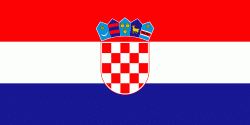Dubrovnik (Grad Dubrovnik)
 |
 |
The history of the city probably dates back to the 7th century, when the town known as Ragusa was founded by refugees from Epidaurum (Ragusa Vecchia). It was under the protection of the Byzantine Empire and later under the sovereignty of the Republic of Venice. Between the 14th and 19th centuries, Dubrovnik ruled itself as a free state. The prosperity of the city was historically based on maritime trade; as the capital of the maritime Republic of Ragusa, it achieved a high level of development, particularly during the 15th and 16th centuries, as it became notable for its wealth and skilled diplomacy. At the same time, Dubrovnik became a cradle of Croatian literature.
The entire city was almost destroyed when a devastating earthquake hit in 1667. During the Napoleonic Wars, Dubrovnik was occupied by the French Empire forces, and then the Republic of Ragusa was abolished and incorporated into the Napoleonic Kingdom of Italy and later into the Illyrian Provinces. Later on, in the early 19th to early 20th century, Dubrovnik was part of the Kingdom of Dalmatia within the Austrian Empire. Dubrovnik became part of the Kingdom of Yugoslavia immediately upon its creation, and it was incorporated into its Zeta Banovina in 1929, before becoming part of the Banovina of Croatia upon its creation in 1939. During World War II, it was part of the Axis puppet state Independent State of Croatia, before being reincorporated into SR Croatia in SFR Yugoslavia.
In 1991, during the Croatian War of Independence, Dubrovnik was besieged by the Yugoslav People's Army for seven months and suffered significant damage from shelling. After undergoing repair and restoration works in the 1990s and early 2000s, it re-emerged as one of the Mediterranean's top tourist destinations, as well as a popular filming location.
The names Dubrovnik and Ragusa co-existed for several centuries. Ragusa, recorded in various forms since at least the 10th century (in Latin, Dalmatian, Italian; in Raguxa), remained the official name of the Republic of Ragusa until 1808, and of the city within the Kingdom of Dalmatia until 1918, while Dubrovnik, first recorded in the late 12th century, was in widespread use by the late 16th or early 17th century.
The name Dubrovnik of the Adriatic city is first recorded in the Charter of Ban Kulin (1189). The most common explanation for the origin is from a Proto-Slavic word dǫbъ meaning 'oak', and the term dubrovnik referring to 'oak wood' or 'oak forest', as in all other Slavic languages the word dub, dàb, means 'oak' and dubrava, mean 'oakwood'.
The historical name Ragusa is recorded in the Greek form Ῥαούσιν (Rhaousin, Latinized Ragusium) in the 10th century. It was recorded in various forms in the medieval period, Rausia, Lavusa, Labusa, Raugia, Rachusa. Various attempts have been made to etymologize the name. Suggestions include derivation from Greek, ῥαγός "grape"; from Greek ῥώξ, ῥωγός "narrow passage"; Greek ῥωγάς "ragged (of rocks)", ῥαγή (ῥαγάς) "fissure"; from the name of the Epirote tribe of the Rhogoi, from an unidentified Illyrian substrate. A connection to the name of Sicilian Ragusa has also been proposed. Putanec (1993) gives a review of etymological suggestion, and favours an explanation of the name as pre-Greek ("Pelasgian"), from a root cognate to Greek ῥαγή "fissure", with a suffix -ussa also found in the Greek name of Brač, Elaphousa. The name of the city in the native Dalmatian language, now extinct, was Ragusa, as shown by a 1325 letter in Dalmatian. In Albanian, the city was referred to as Rush (Rushi), from Latin Ragusium, which itself could be derived from Proto-Albanian *rāguša meaning "berry".
The classical explanation of the name is due to Constantine VII's De Administrando Imperio (10th century). According to this account, Ragusa (Ῥαούσιν) is the foundation of the refugees from Epidaurum (Ragusa Vecchia), a Greek city situated some 15 km to the south of Ragusa, when that city was destroyed in the Slavic incursions of the 7th century. The name is explained as a corruption of a Dalmatae/Romance word Lausa, the name of the rocky island on which the city was built (connected by Constantine to Greek λᾶας "rock, stone").
Map - Dubrovnik (Grad Dubrovnik)
Map
Country - Croatia
Currency / Language
| ISO | Currency | Symbol | Significant figures |
|---|---|---|---|
| HRK | Croatian kuna | kn | 2 |
| ISO | Language |
|---|---|
| HR | Croatian language |
| SR | Serbian language |


















